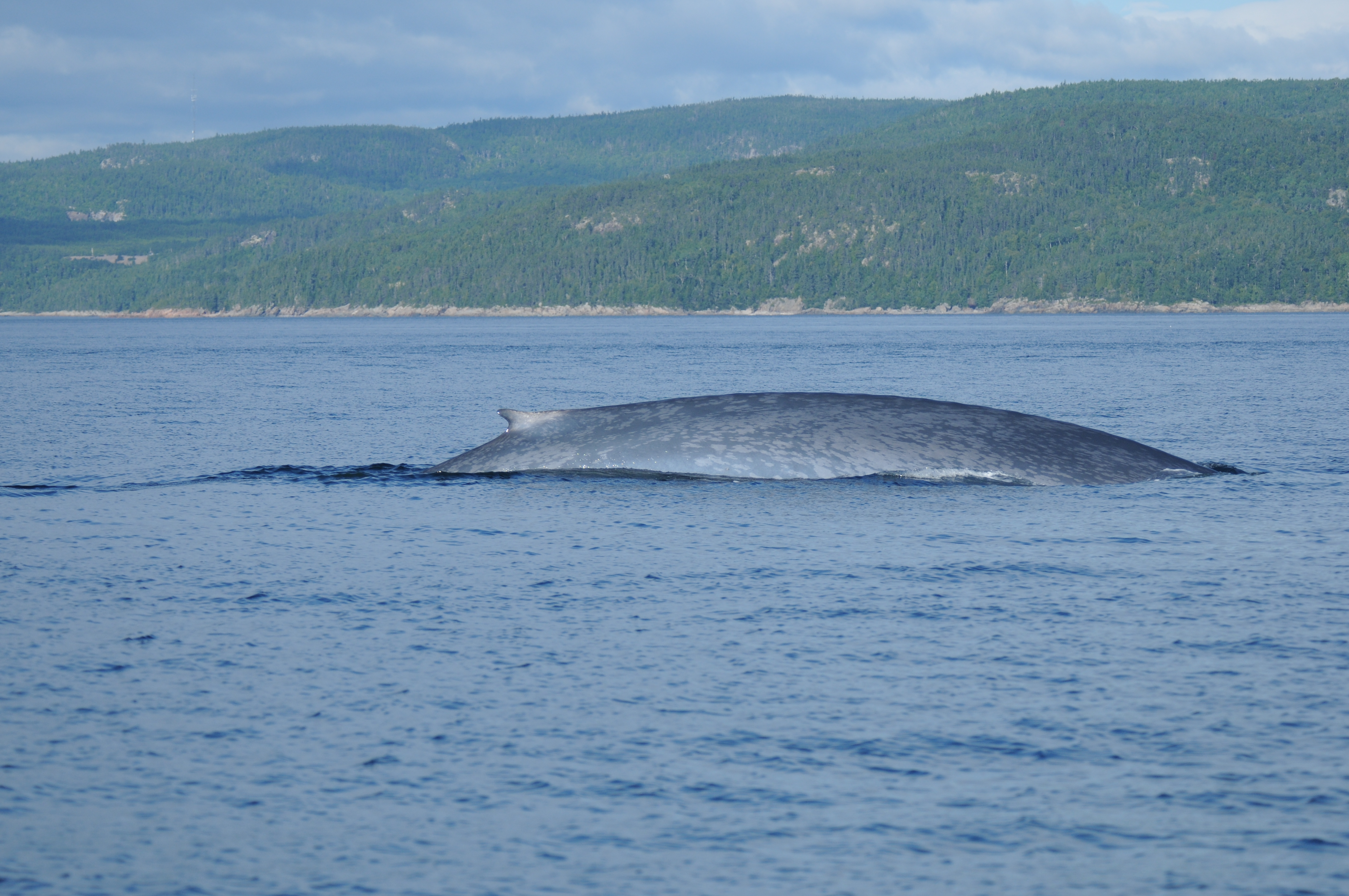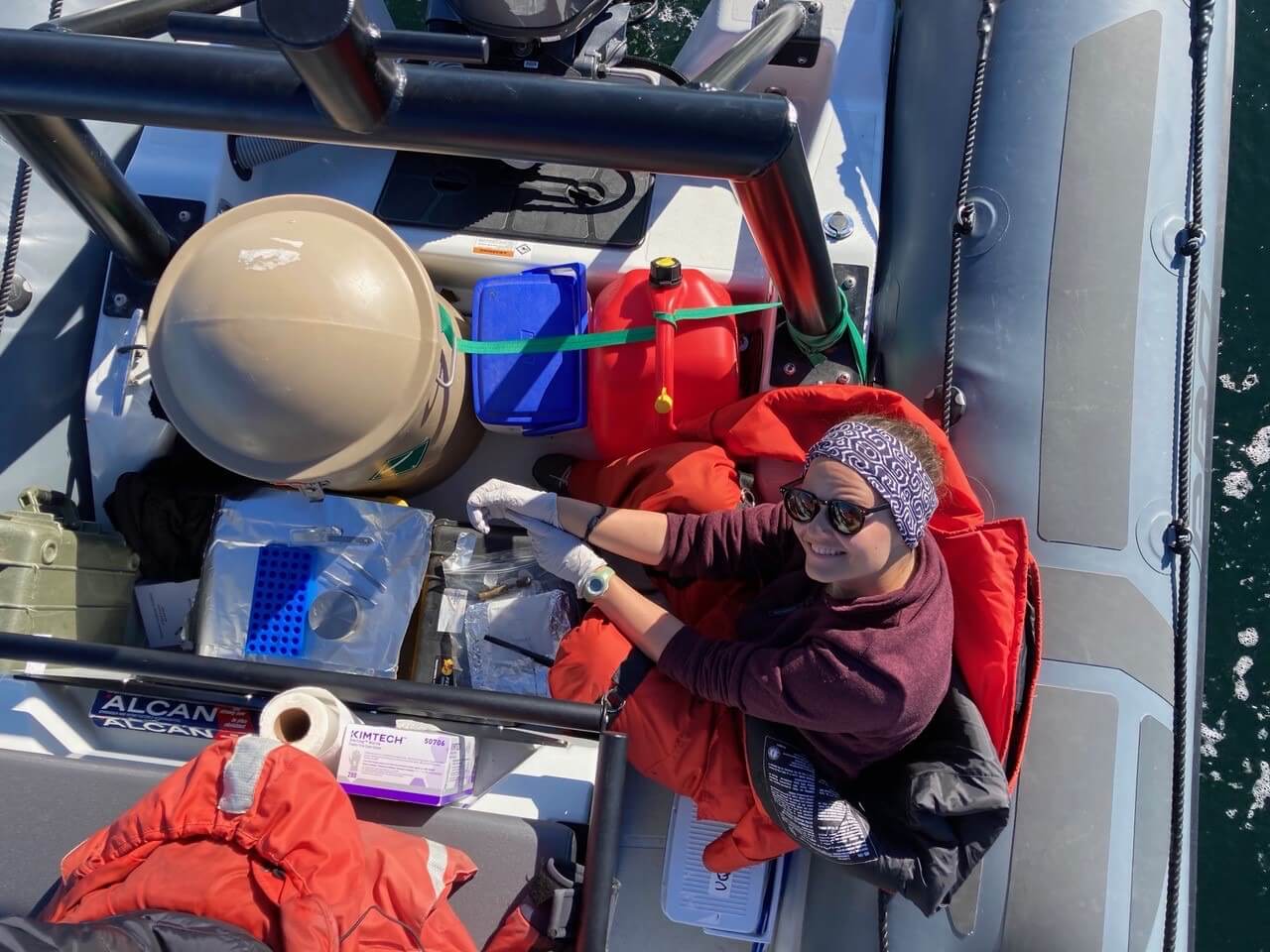The testimony of Émilien Pelletier before Quebec’s environmental assessment agency (BAPE) last week cast a dark cloud over the whales of the St. Lawrence. In 2015, the shelving of the Cacouna oil terminal project allowed marine mammals of the St. Lawrence to sidestep a major threat. Emilien Pelletier reminds BAPE commissioners that an accidental spill from the Energy East Pipeline would likely have serious consequences on the marine environment.

Testifying before the BAPE on March 15, Mr. Pelletier, who serves as Research Chair in Molecular Ecotoxicology in Coastal Areas at the Institut des sciences de la mer de Rimouski, explained that a spill in the salt waters of the St. Lawrence would be extremely difficult to contain and clean up.
With its Energy East project, Alberta-based TransCanada could transport up to 1.25 million barrels of oil a day from the Prairies to New Brunswick. From there, much of the oil would be loaded onto tankers for export. The proposed pipeline route would traverse 860 watercourses throughout Quebec, the vast majority of which empty into the St. Lawrence. In the event of an accident and spillage, the St. Lawrence would thus be directly threatened.
According to a study conducted by Polytechnique Montréal for the Quebec government, “the downstream sector of the St. Lawrence River is considered to be extremely sensitive in the event of an accidental spill.” The report also mentions that “one of the most vulnerable ecosystems is located in the St. Lawrence Estuary, i.e. downstream of the projected water crossings for the Energy East Pipeline project”.
According to Mr. Pelletier, although there are ways to recover spilled oil such as the use of floating barriers called booms, the effectiveness of these methods is limited in the case of the Energy East project due to the characteristics of the receiving environment and the types of oil transported.
Characteristics of the environment

The presence of ice on the St. Lawrence River for a significant portion of the year and the salinity of the Estuary and the Gulf would make oil recovery in the event of a spill in these environments very difficult.
“Oil tends to get under the ice and even to mix with the ice. When the Estuary is ice covered and there’s a spill, it’s almost catastrophic because we’re hard-pressed to respond”, says Pelletier, who has been studying offshore oil accidents for some thirty years.
The salinity of the ice adds an extra challenge. “Sea ice, unlike the more familiar freshwater ice, is brittle and porous and therefore facilitates the infiltration and sequestration of spilled oil,” says Mr. Pelletier, adding that “oil in active sea ice quickly becomes impossible to recover.”
Particularities of Tar Sand Oil
The main category of oil that TransCanada plans to transport is a diluted bitumen extracted from the oil sands, also known as “dilbit”. It is heavier and more viscous than conventional oil and is believed to be more difficult and costly to recover in the event of a spill. Being heavier, it quickly disappears below the water surface. Being more viscous, it sticks to everything. “Clean-up difficulties increase 10-fold because of the high viscosity of the product,” claims the professor.
A US study conducted by a committee of the National Academies of Sciences, Engineering, and Medicine and published in early 2016 concluded that diluted bitumen has unique characteristics and risks compared to conventional oil. According to the committee, current regulations in the United States, particularly with respect to emergency spill response, are inadequate for this type of oil and should be revised to take into account the particularities of diluted bitumen. A recommendation that might warrant consideration on this side of the border, according to Mr. Pelletier.
Effects of a spill on St. Lawrence marine species
What impact would an accidental spill from the Energy East Pipeline have on marine species in the St. Lawrence? Information provided during BAPE hearings is insufficient to allow us to properly address this question. However, given the importance and fragility of the St. Lawrence marine ecosystem, this issue warrants closer examination.
The effects on marine species depend on many factors, including the magnitude and location of the spill as well as the toxicity of the spilled oil and diluents. An analysis by Fisheries and Oceans Canada published in 2015 mentions that “there is currently a lack of research assessing the potential effects of diluted bitumen and synthetic crude oil (upgraded bitumen) on aquatic organisms.”
Studies conducted following major spills – including the 1989 Exxon Valdez spill in Alaska, and the 2010 Deepwater Horizon accident in the Gulf of Mexico – draw worrisome conclusions with regard to the long-term consequences on marine wildlife. Firstly, despite cleanup efforts, oil persists in the marine ecosystem for many years after the incident. Secondly, even if oil does not necessarily kill wildlife in the immediate aftermath of a spill, long-term exposure may result in effects that can be observed later in the animal’s life or in subsequent generations. This can lead to declines in the populations and can cause a chain of indirect effects that prevent populations from recovering over the long term.

Although there is currently a lack of data to properly assess the impact of a spill on marine mammals in the St. Lawrence, one thing is certain: the risks associated with a surge in hydrocarbon transport along the St. Lawrence will be an additional stress sustained by this fragile and precious ecosystem. A dozen species of cetaceans frequent the St. Lawrence from spring to fall and the beluga is a year-round resident. Almost half of these species are at risk according to the Committee on the Status of Endangered Wildlife in Canada.
How does climate change play into all of this?
According to some experts and citizens, focusing on the local risks of the Energy East Pipeline is a distraction from the real debate that should be held on the issues of climate change and oil drilling in the tar sands. For many, the urgency of curbing greenhouse gas emissions to prevent dangerous global warming is reason enough to let the oil sands where they are. According to a British study published in 2015 in the scientific journal Nature, 85% of Canadian oil sands would need to remain in the ground to keep the rise in global temperatures to below two degrees Celsius.
Climate change add to the numerous threats faced by marine species in the St. Lawrence. Scientists expect that climate change will impact marine mammals by modifying their habitat and affecting their food resources.
The lives of St. Lawrence marine mammals are dependent on the health of this great river and its inextricably linked tributaries. The Quebec economy and the lives of its citizens are also closely intertwined with this ecosystem. The St. Lawrence River is the source of drinking water for nearly half of Quebec’s residents and the living environment of almost 80% of the province’s population. Over the past 30 years, several hundreds of millions of dollars have been invested to protect, restore and promote the St. Lawrence ecosystem. If a dark cloud is hanging over the whales, it inevitably hangs over our heads as well.
Sources:
BAPE (in French): Projet Oléoduc Énergie Est – section québécoise
What We Know About the BP Oil Disaster
Long-Term Ecosystem Response to the Exxon Valdez Oil Spill
The geographical distribution of fossil fuels unused when limiting global warming to 2°C
To learn more:
On Radio-Canada (in French): Risques de déversement : le plaidoyer d’Émilien Pelletier devant le BAPE
In La Presse Canadienne (in French): Énergie Est : un déversement en mer serait très difficile à contrôler
In Le Soleil (in French): Le pétrole d’Énergie Est très difficile à nettoyer, selon un expert
On Whales Online (note that articles whose titles are in French have not been translated):
Projet de port pétrolier à Cacouna: un danger pour les bélugas
Des pathologies chez des dauphins du golfe du Mexique reliées à la marée noire?
Marée noire du golfe du Mexique : le règlement des dommages environnementaux
Une première estimation de l’impact de la marée noire du golfe du Mexique sur les cachalots
Marée noire du golfe du Mexique : un premier bilan et la question de ses impacts





